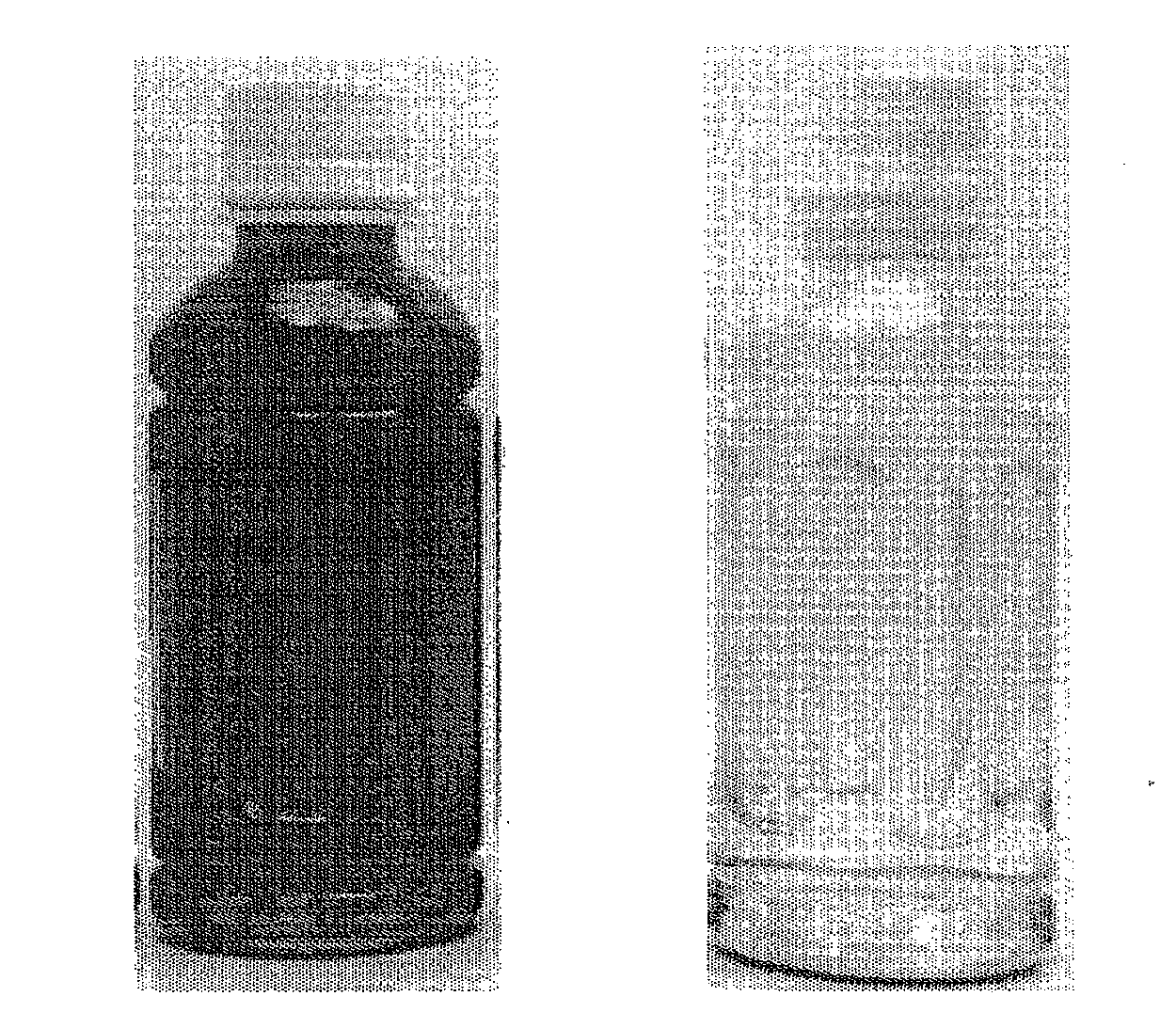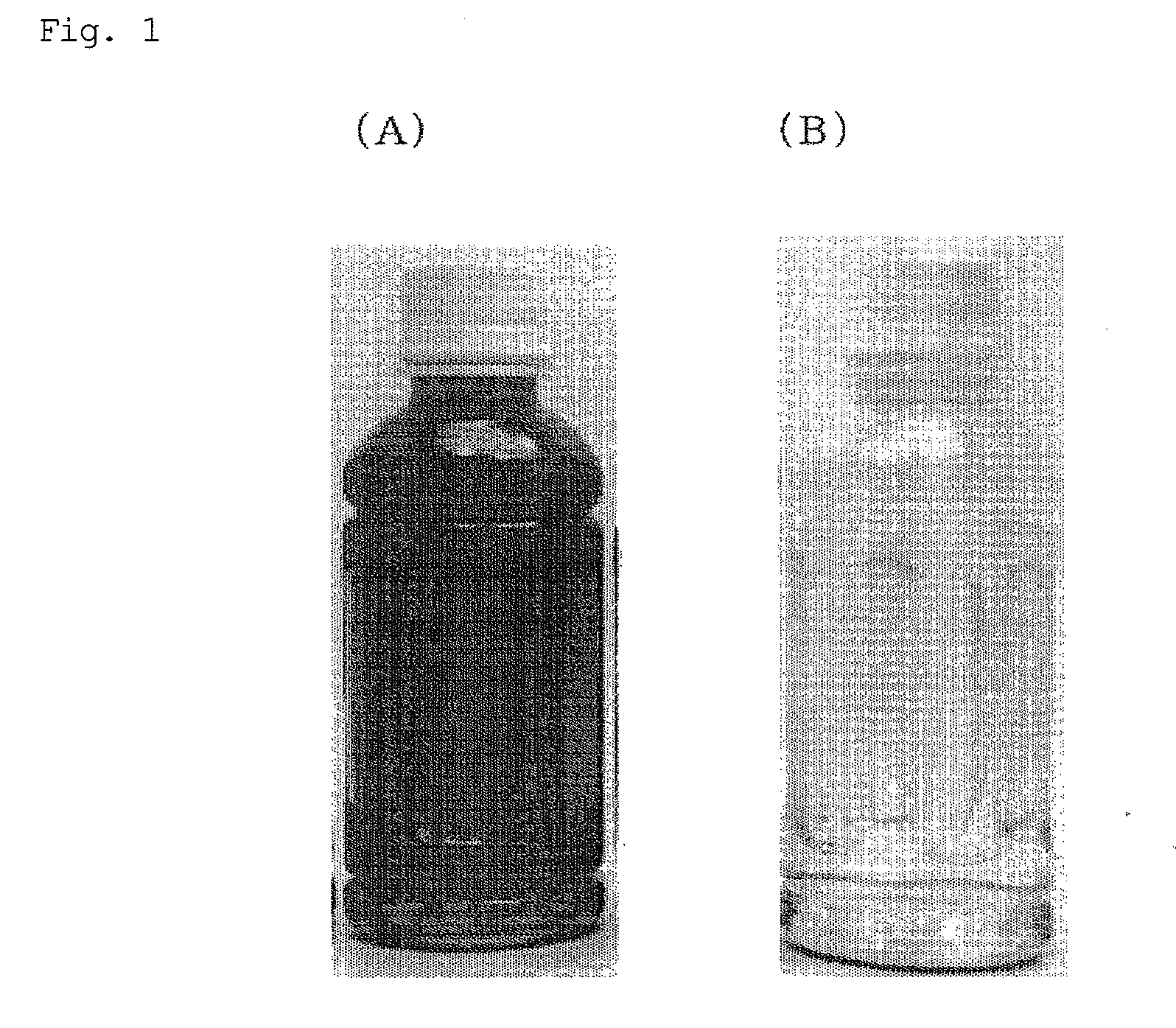Malt extract and manufacturing method therefor
a technology of malt extract and manufacturing method, which is applied in the field of malt extract, can solve problems such as sedimentation or turbidity, and achieve the effect of suppressing precipitation of insoluble matter
- Summary
- Abstract
- Description
- Claims
- Application Information
AI Technical Summary
Benefits of technology
Problems solved by technology
Method used
Image
Examples
example
[0073]The present invention is more specifically explained with reference to Examples and Comparative Examples below. However, the present invention is not limited to these Examples. The term “parts” indicates “parts by mass” and “%” indicates “% by mass”, unless otherwise specified. The “*” symbol in the specification indicates a product of San-Ei Gen F.F.I., Inc., and “**” indicates a registered trademark of San-Ei Gen F.F.I., Inc.
experiment 1
Preparation of Acidic Carbonated Beverages Using Different Kinds of Malt Extracts
(1) Preparation of Malt Extract
[0074]40 g of a malt extract as a starting material (an untreated liquid malt extract) having an absorbance of 500 at a wavelength of 500 nm (this wavelength is used hereinafter) was added to 160 g of ion-exchanged water, thereby preparing a 20% malt extract (standard preparation). The above an untreated liquid malt extract was prepared by permeating roasted or unroasted malts in a 5- to 20-fold amount of water for 30 minutes to 15 hours at room temperature to 100° C., and saccharifying the extracted malt juice. Then, the saccharified extract was subjected to the following treatments (filtration, cation exchange resin treatment, enzyme treatment, centrifugation) to prepare a processed malt extract.
examples 1 and 2
Comparative Example 1
[0075]4 g of Celite (calcined diatom earth; particle diameter=1 to 100 μm, produced by Celite Corporation) as a filtration adjuvant was bedded on a filter made of a cellulose-mixed ester and having a diameter of 11 cm (Advantec Toyo; Example 1: pore diameter=0.6 μm, Example 2: pore diameter=0.8 μm, Comparative Example 1: pore diameter=1.0 μm). Through this filter, 300 g of the 20% malt extract (standard preparation) obtained above was filtered. The pore diameter of the filter denotes the maximum pore diameter measured according to the bubble point method (JIS K 3832; water was used). The resulting filtrate was condensed until the absorbance became 250, thereby preparing a filtered malt extract (Examples 1 and 2, Comparative Example 1).
PUM
 Login to View More
Login to View More Abstract
Description
Claims
Application Information
 Login to View More
Login to View More - R&D
- Intellectual Property
- Life Sciences
- Materials
- Tech Scout
- Unparalleled Data Quality
- Higher Quality Content
- 60% Fewer Hallucinations
Browse by: Latest US Patents, China's latest patents, Technical Efficacy Thesaurus, Application Domain, Technology Topic, Popular Technical Reports.
© 2025 PatSnap. All rights reserved.Legal|Privacy policy|Modern Slavery Act Transparency Statement|Sitemap|About US| Contact US: help@patsnap.com


